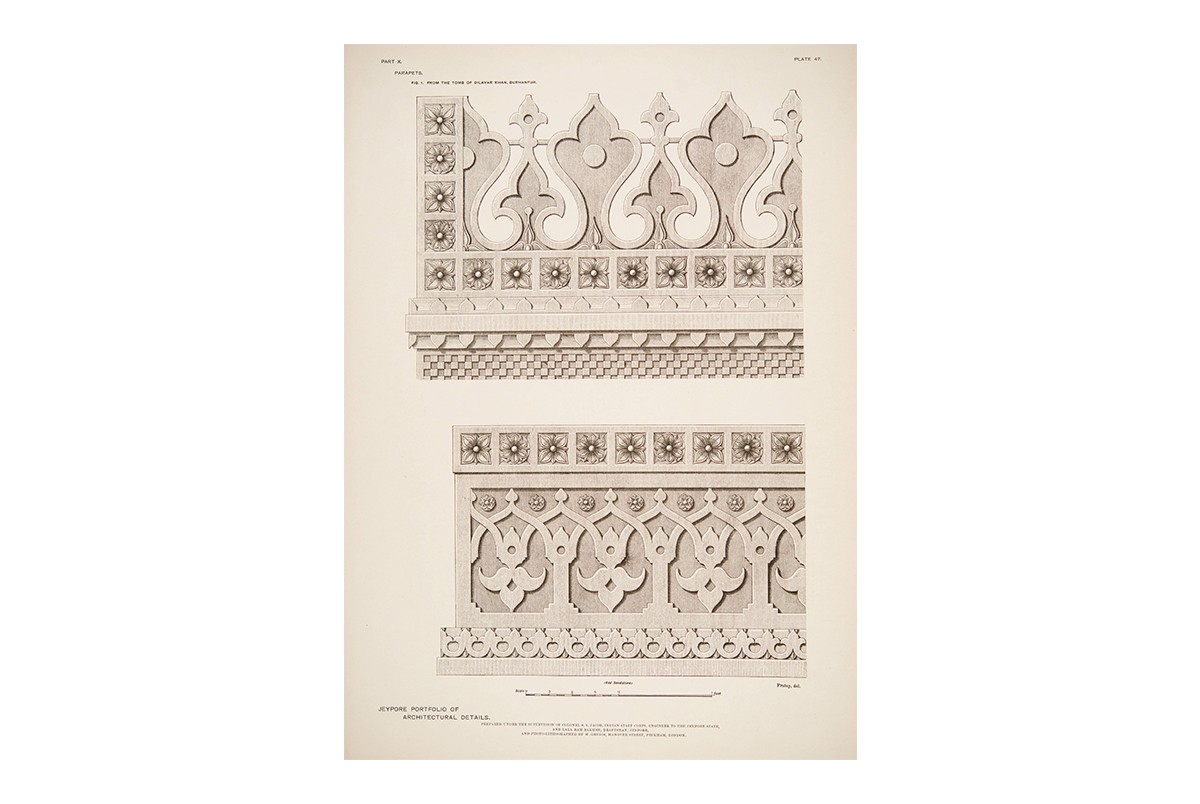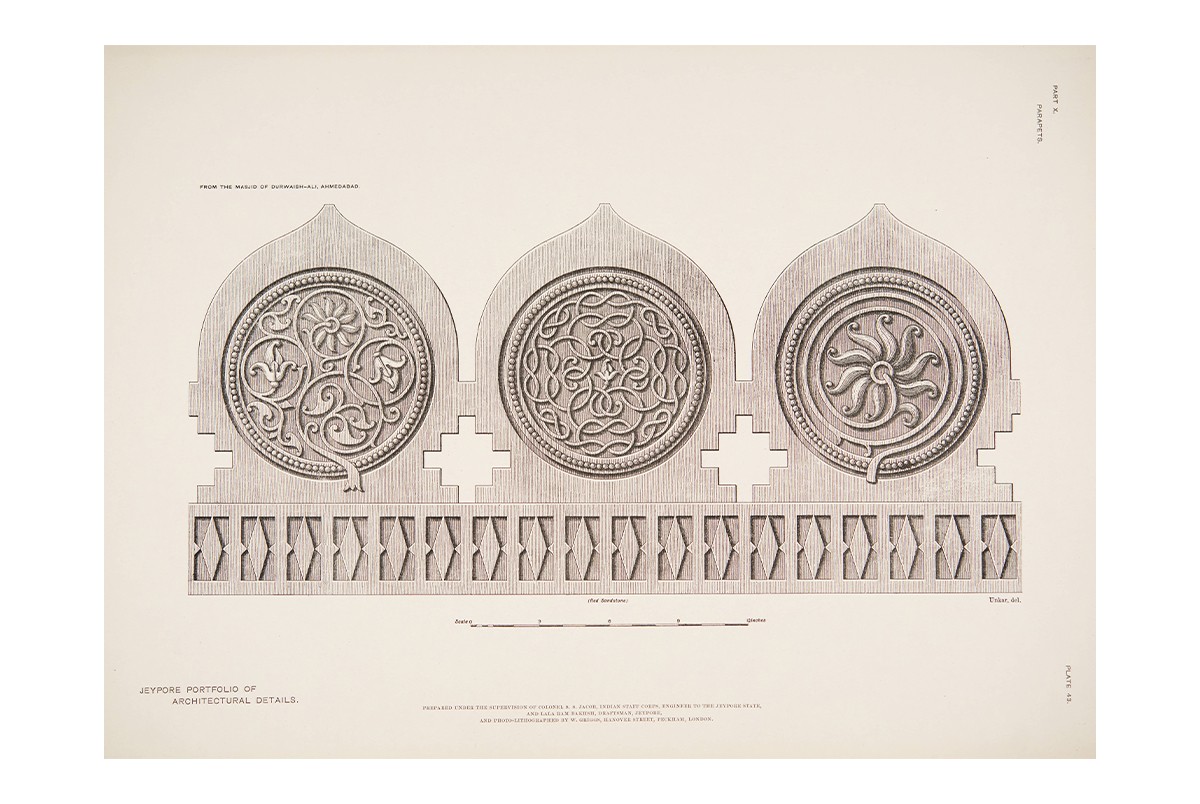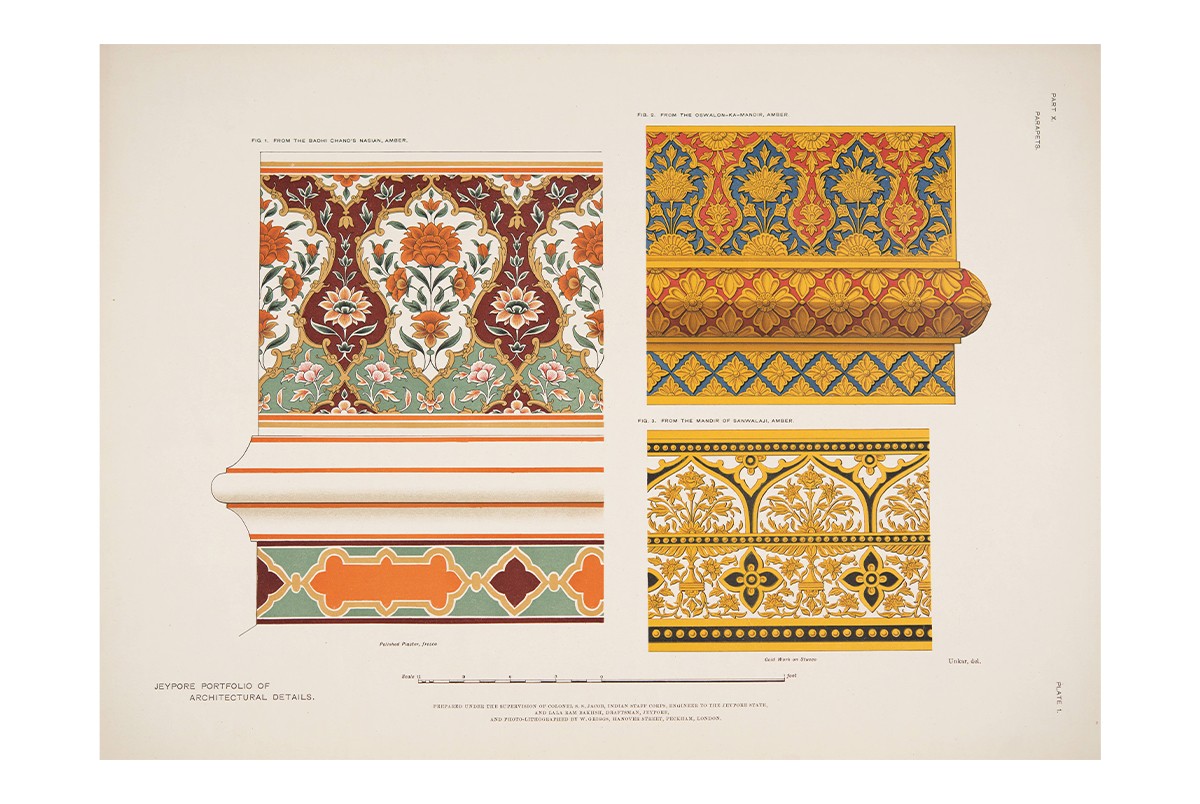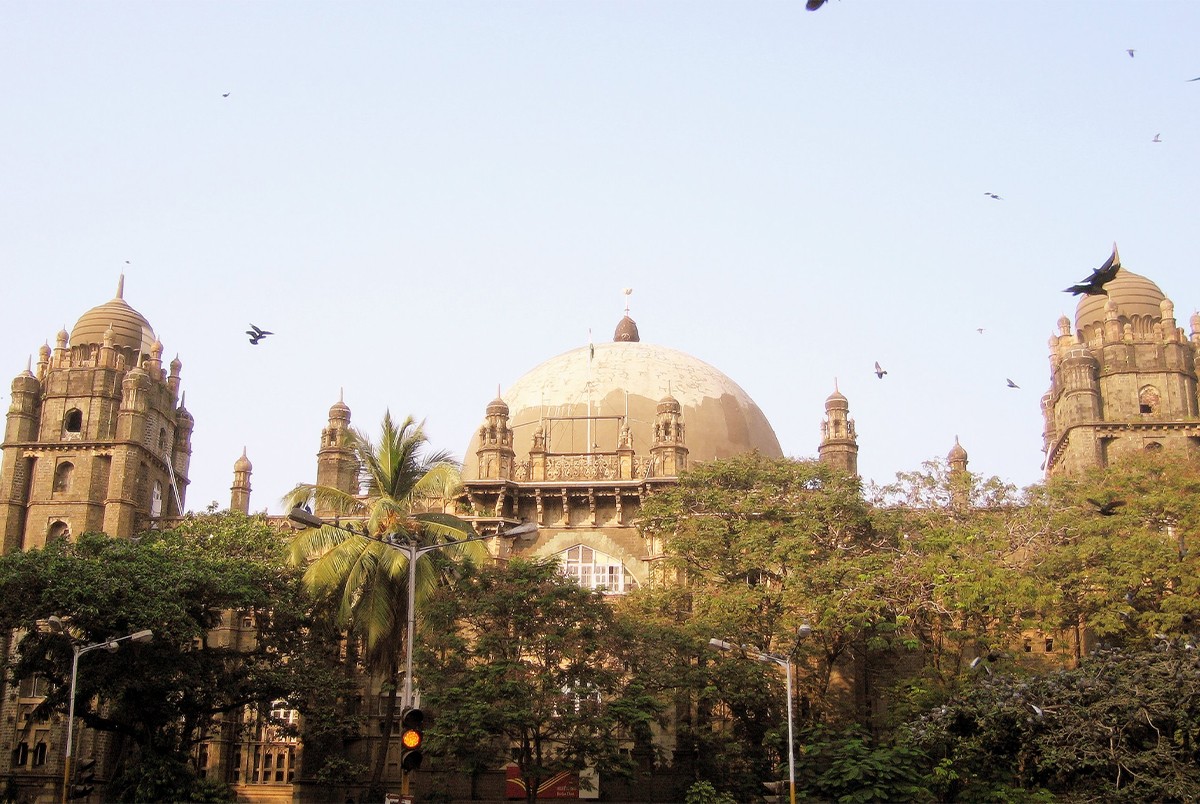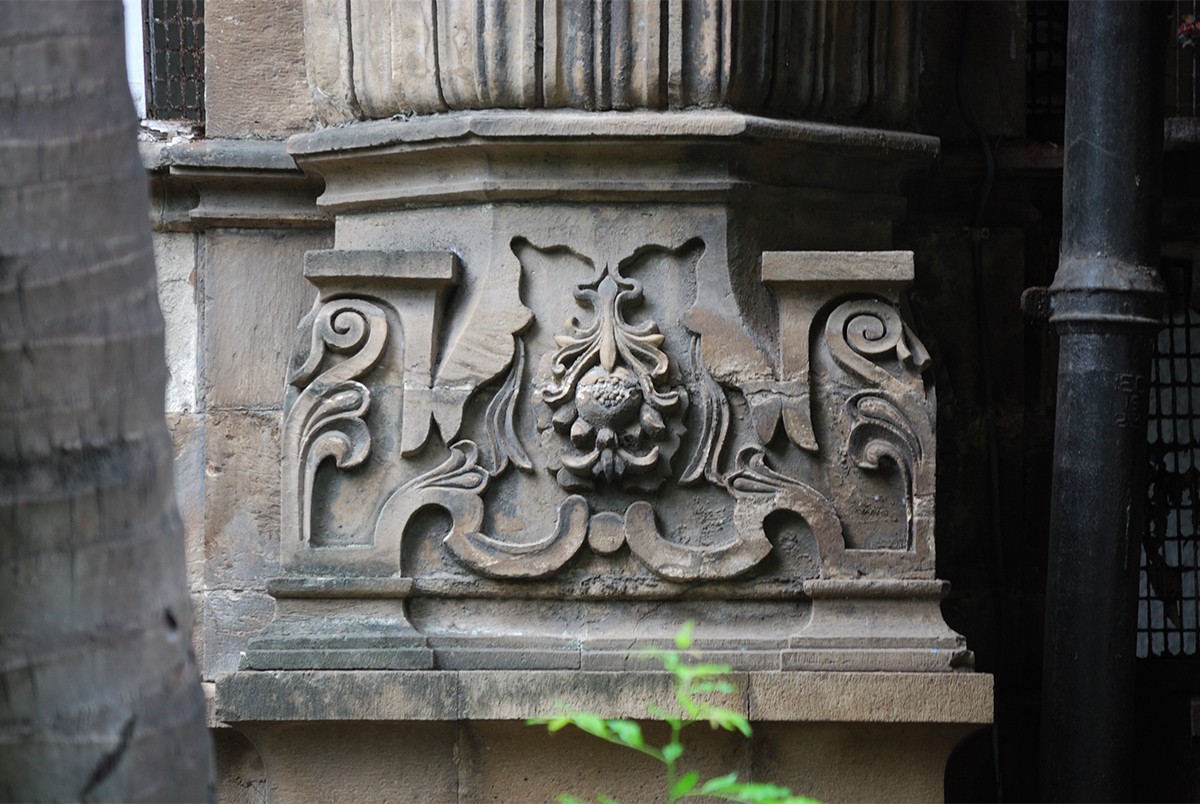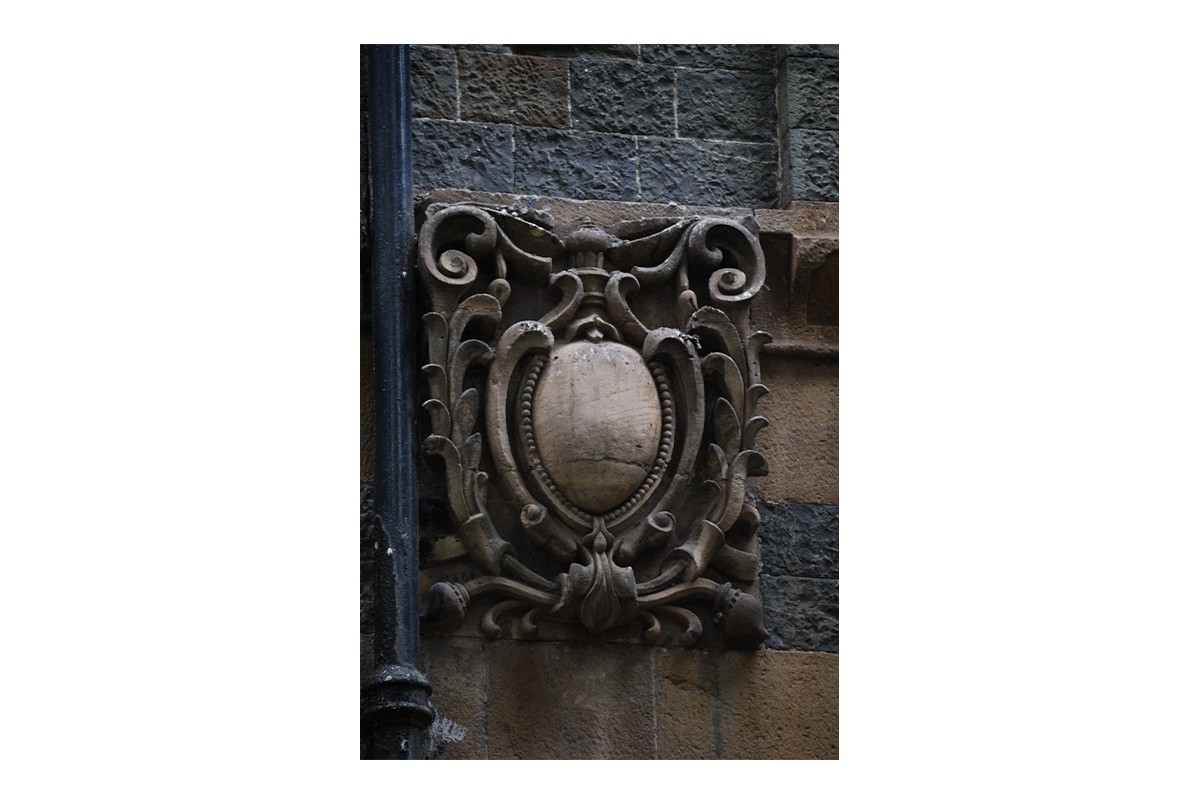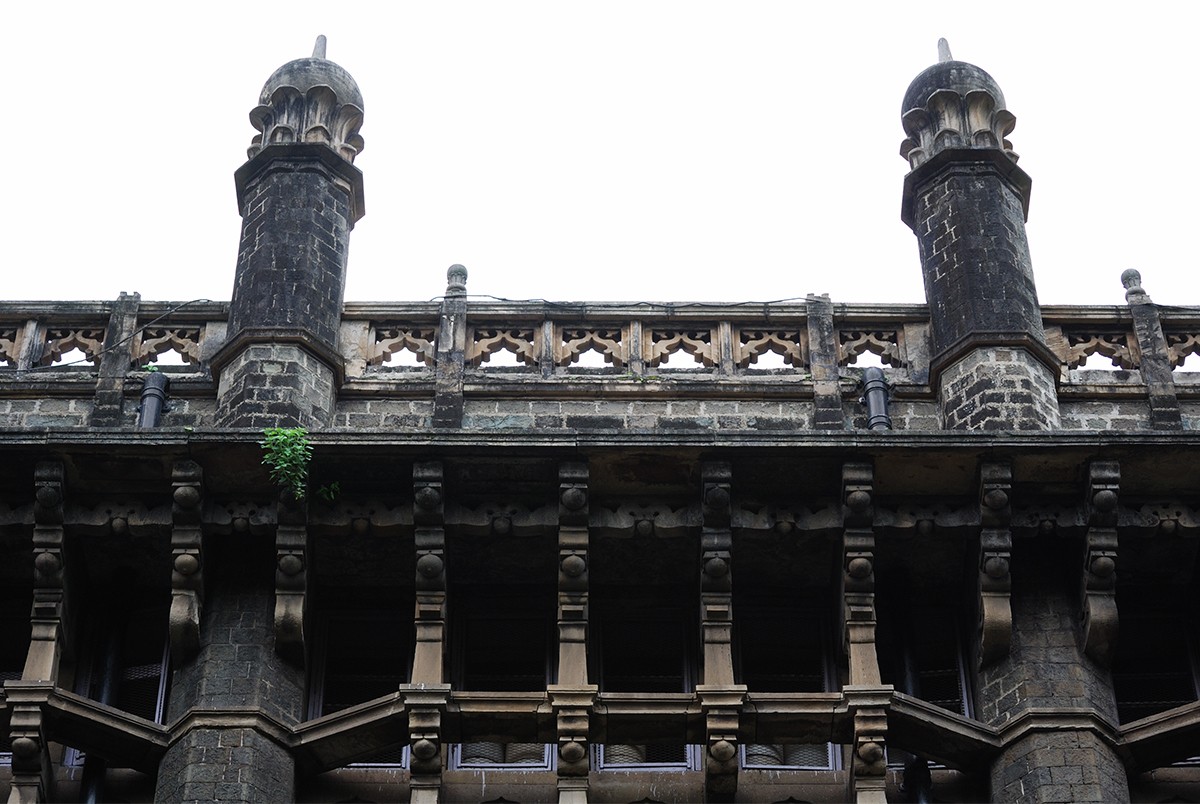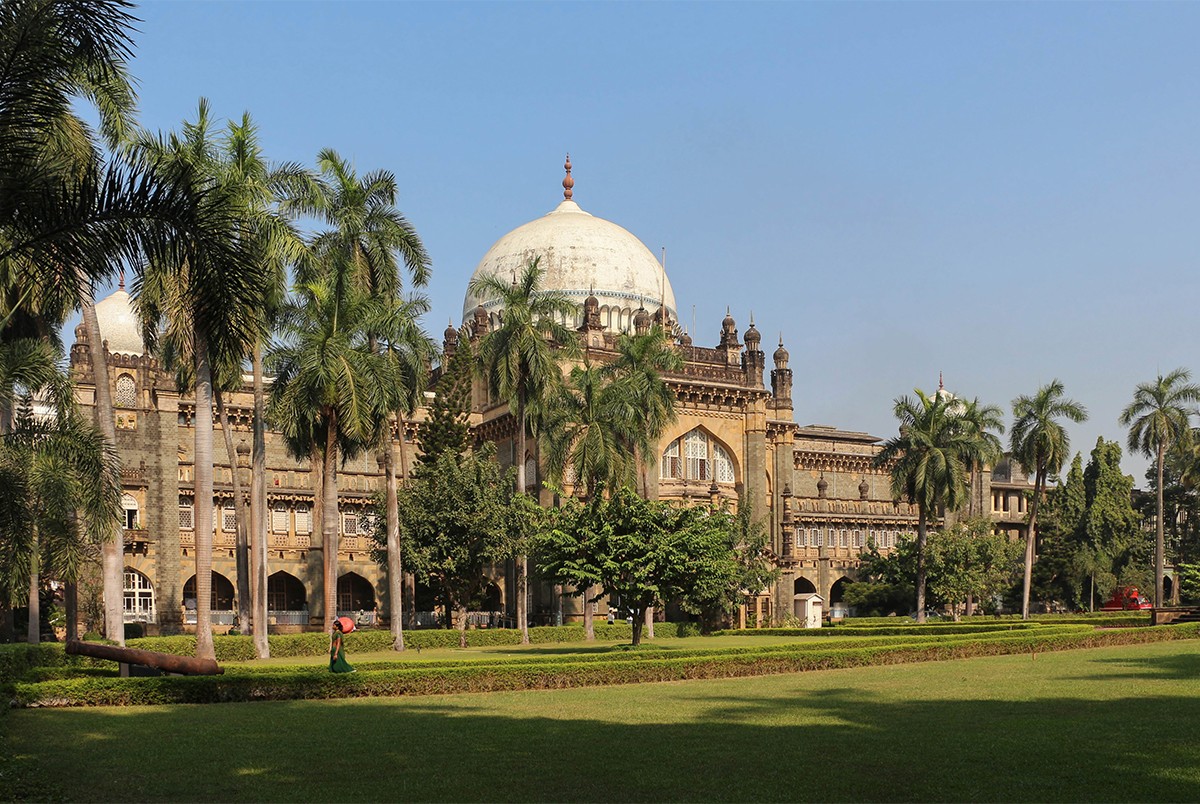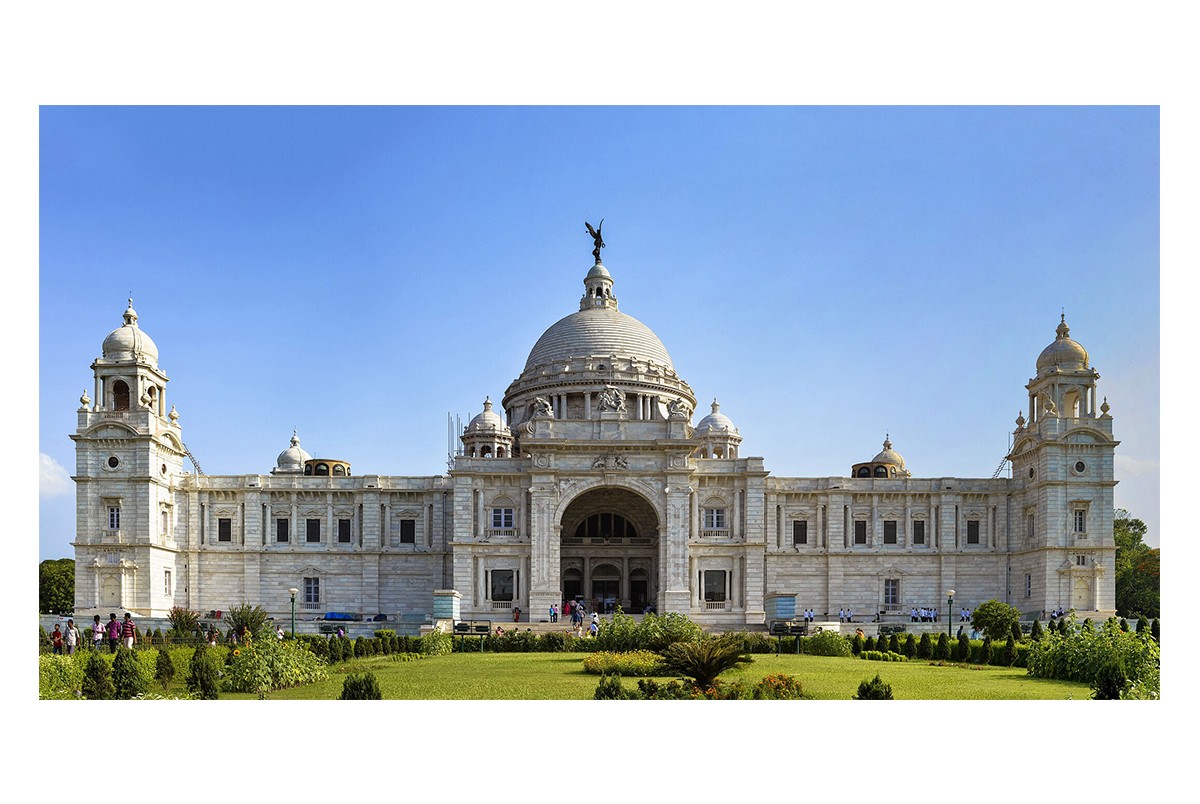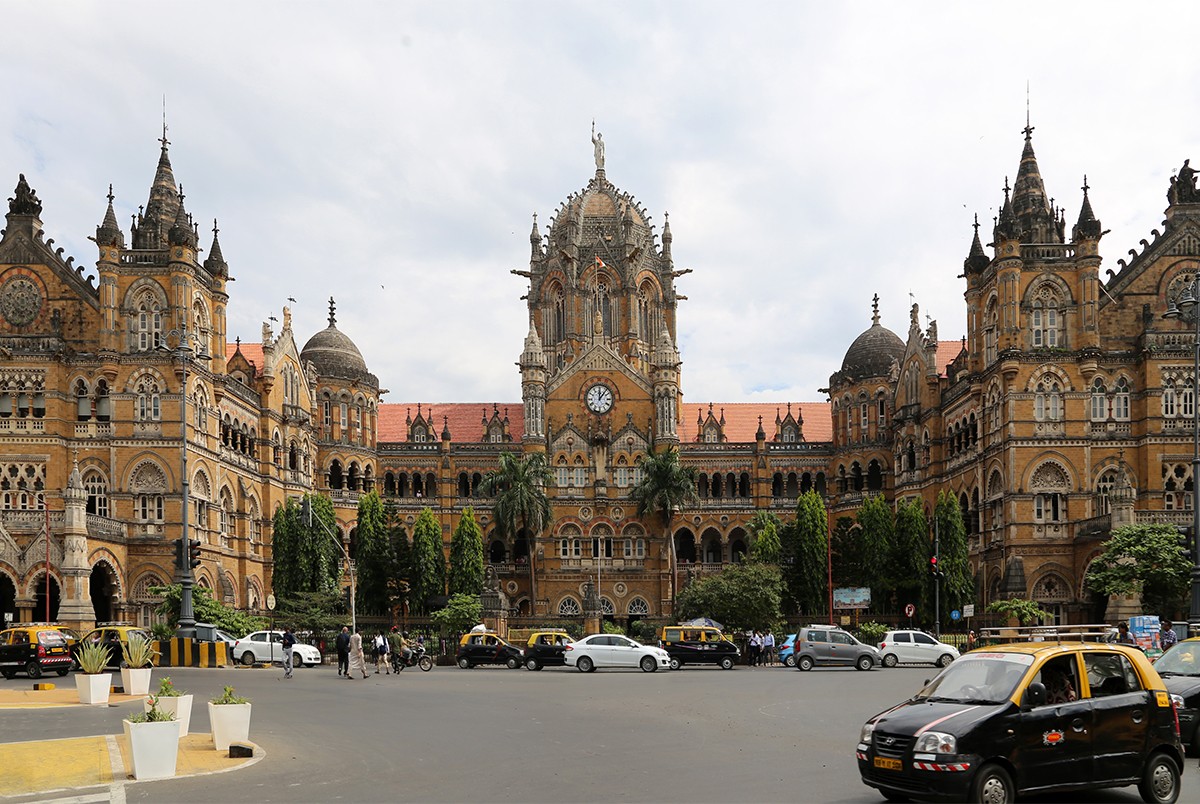A Style of Colonial Architecture is Established
1860–1920
A new architectural style emerges in the aftermath of the Indian Revolt of 1857, as the governance of India moves to the British Crown and British architects and scholars reconsider the colonial city (primarily Bombay and Madras) from an archaeological lens. However, rather than excavate evidence of the city’s past, they see themselves as giving it that past, in order to create a city with heritage in mind.
Founded in the ideology of legitimising British rule as the successor to Mughal rule in the subcontinent, colonial architecture of this period also plays to the notion of unity among two of the subcontinent’s primary religious communities. Called Indo-Saracenic (a term considered inaccurate and outdated in the present day), the style borrows elements from Islamic architecture from central Mughal sites like Delhi and Agra, as well as regional styles from Ahmedabad and Bijapur, and to a lesser extent, elements of traditional Hindu architecture. Its use is most frequently seen in public and official buildings throughout British India between the 1860s and the 1920s. Key features of the style include bulbous central domes, curvilinear roofs inspired by the Bengali chala (sloped roof), pavilions, chhatris (pavilions with open archways and domed roofs), openwork stone screens, and towers and minarets. Works like Samuel Swinton Jacob’s Jeypore Portfolio of Architectural Details serve as a reference to elements of design.
A major example of this borrowed legacy is the General Post Office in Bombay (present-day Mumbai), designed by John Begg, modelled on the Gol Gumbaz in Bijapur (present-day Vijayapura). Its dome is also referenced in the Prince of Wales Museum (present-day Chhatrapati Shivaji Maharaj Vastu Sangrahalaya) in Mumbai, designed by George Wittet.
Bibliography
Desai, Madhavi, Miki Desai, and Jon Lang. The Bungalow in Twentieth-Century India. New York: Routledge, 2017.
Gordon, Sophie. “The Colonial Project and the Shifting Gaze.” Marg 59, no. 4 (2008): 40–53.
Sen, Siddhartha. “Between Dominance, Dependence, Negotiation, and Compromise: European Architecture and Urban Planning Practices in Colonial India.” Journal of Planning History 9, no. 4 (2010): 203–231.
Hancock, Mary. The Politics of Heritage from Madras to Chennai. Bloomington: Indiana University Press, 2008.
Feedback 
This entry appears in
Art in South Asia
Visit Timeline
Associated Timeline Events
First Published: March 11, 2024
Last Updated: August 5, 2024



